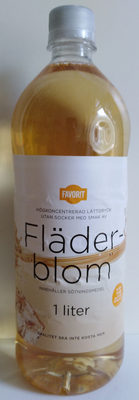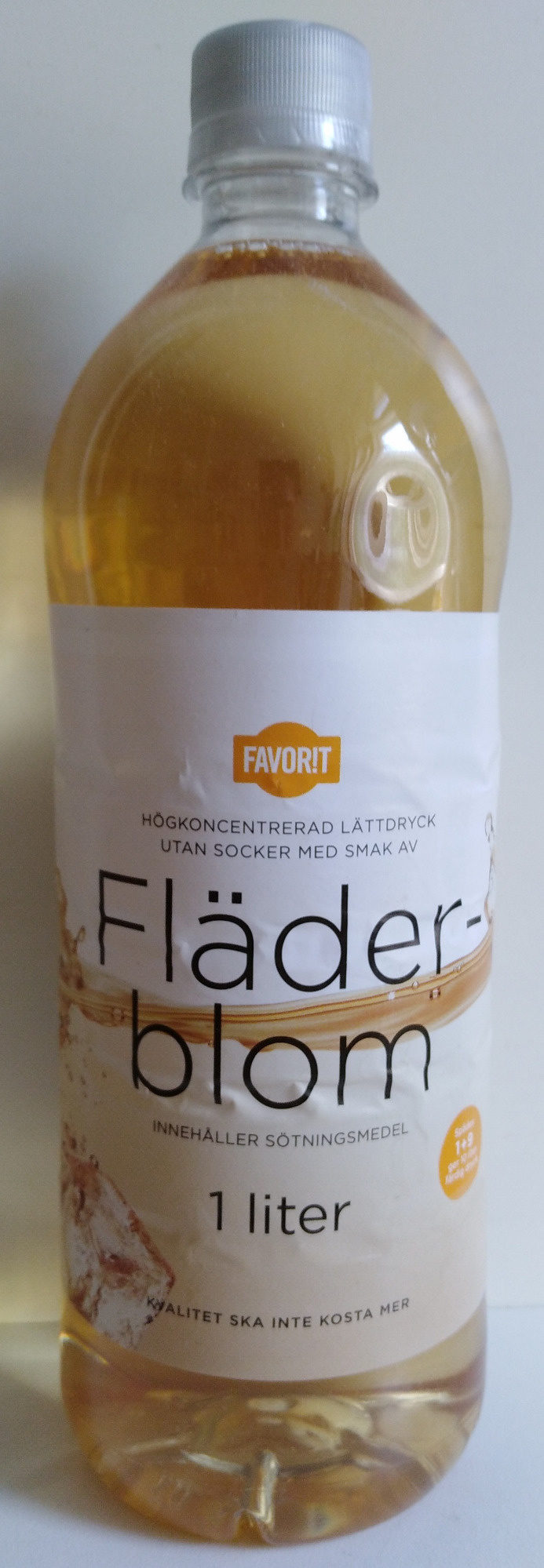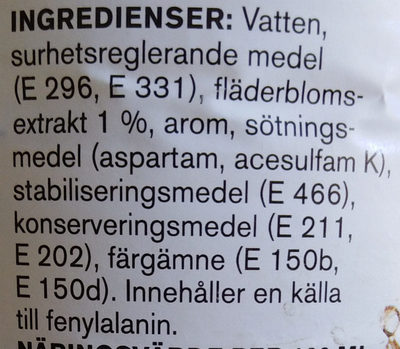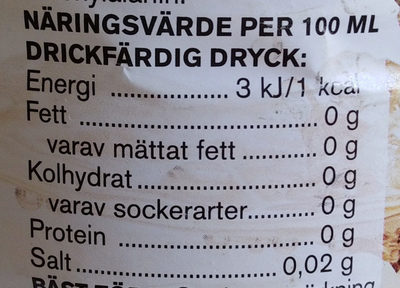Fläderblom - Favor!t - 1 l
This product page is not complete. You can help to complete it by editing it and adding more data from the photos we have, or by taking more photos using the app for Android or iPhone/iPad. Thank you!
×
Barcode: 7331746234064 (EAN / EAN-13)
Common name: Lättdryck fläder
Quantity: 1 l
Packaging: Plastic, Pet-polyethylene-terephthalate
Brands: Favor!t
Categories: Plant-based foods and beverages, Plant-based foods, Syrups, Elderberry products
Labels, certifications, awards: Contains a source of phenylalanine
Link to the product page on the official site of the producer: https://dinafavoriter.se/produkt/lattdry...
Stores: City Gross
Countries where sold: Sweden








